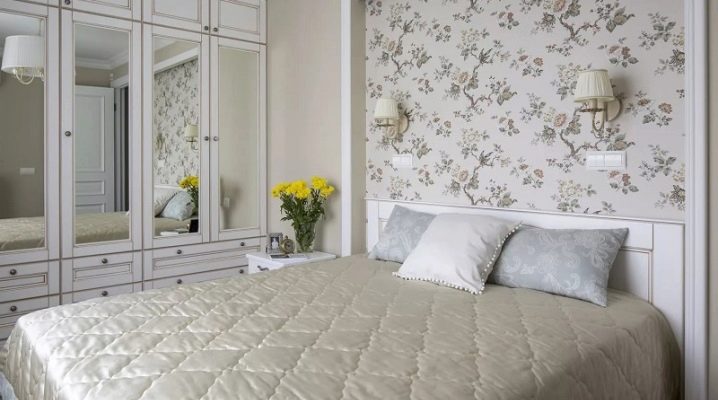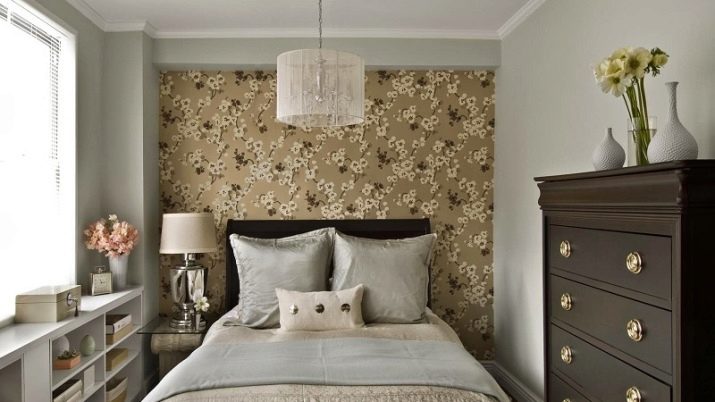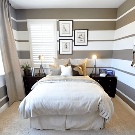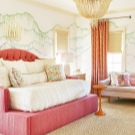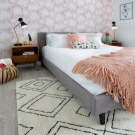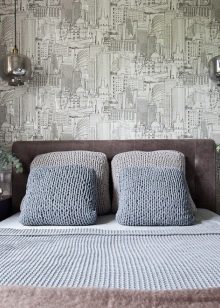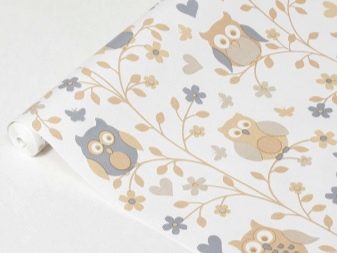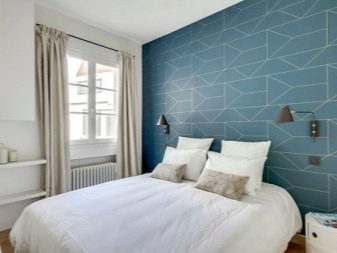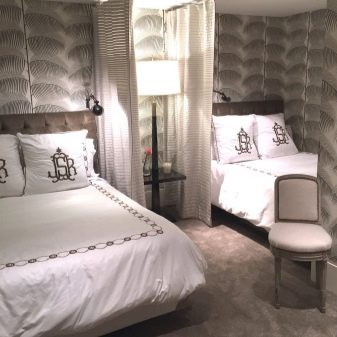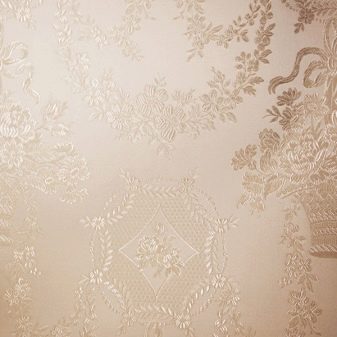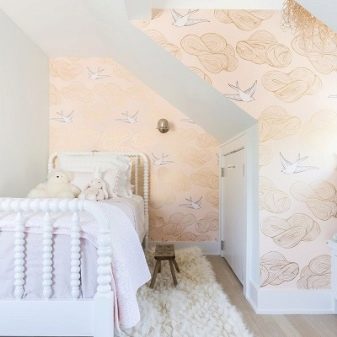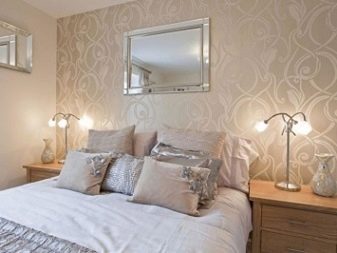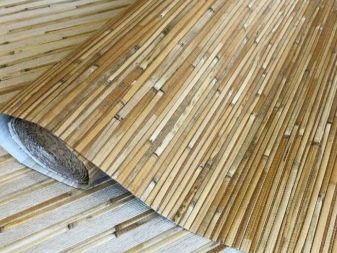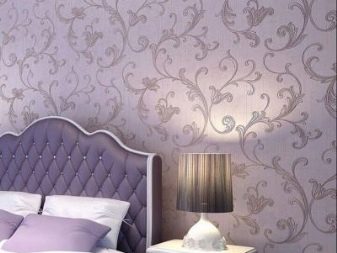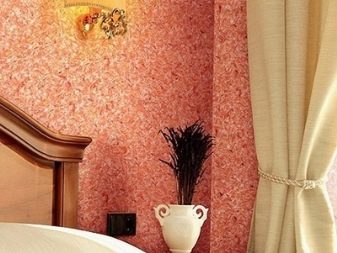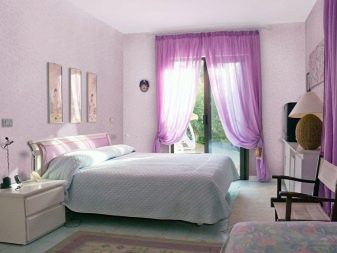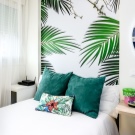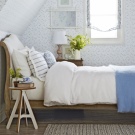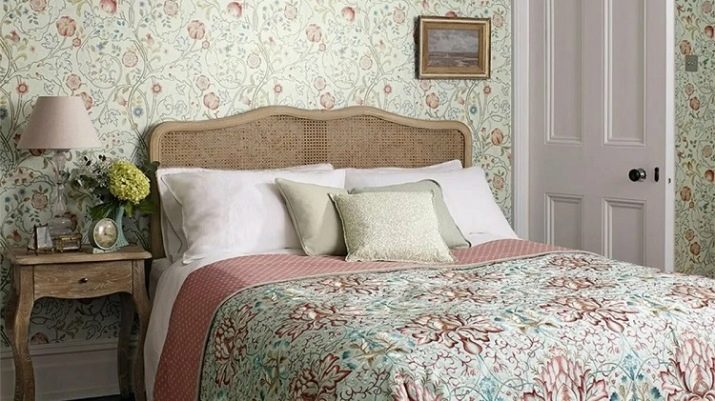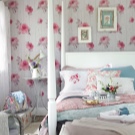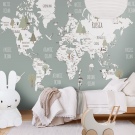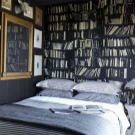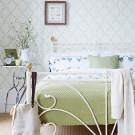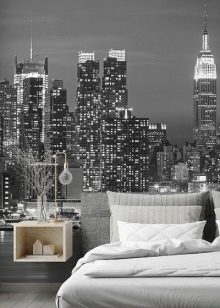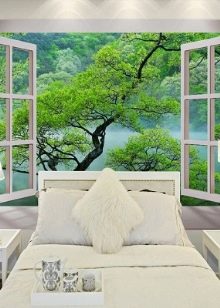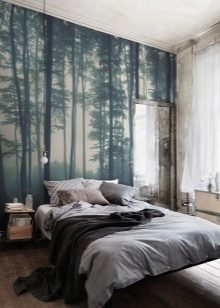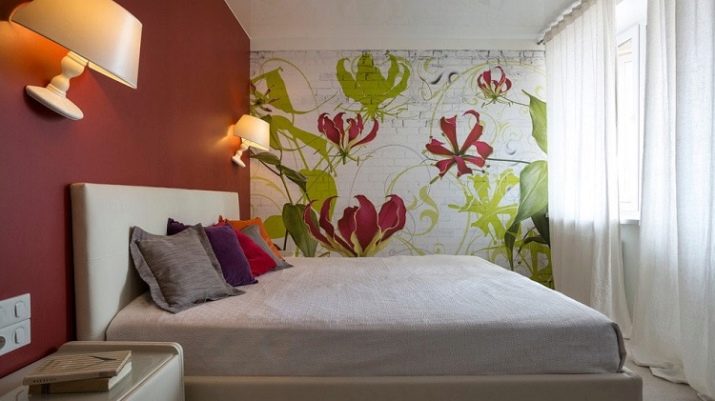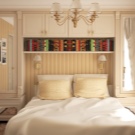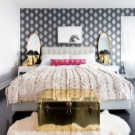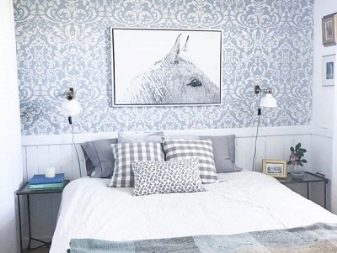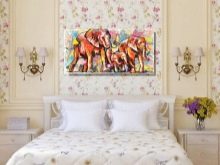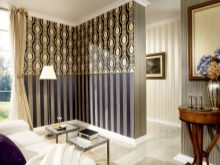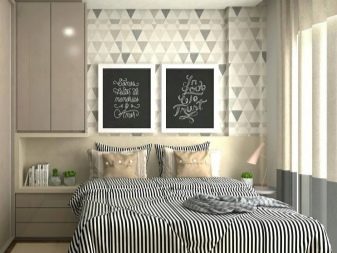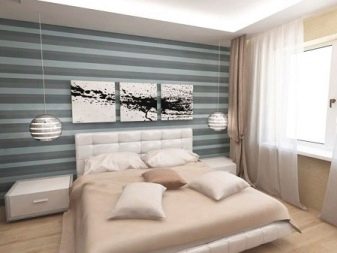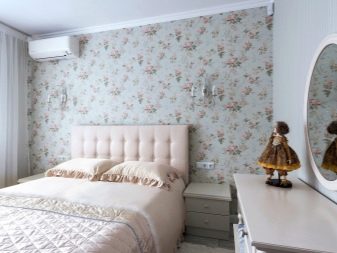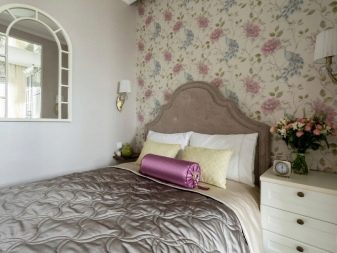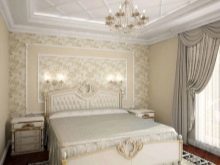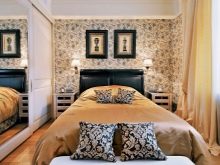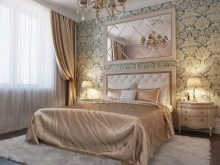Choosing wallpaper for a small bedroom
The choice of wallpaper for a small bedroom plays a very important role - the level of comfort and the general perception of the seating area largely depend on their shade and print. Old-style apartments cannot boast of much space. That's why when arranging them, one should resort to visual techniques that can visually stretch a narrow bedroom, raise the ceilings and fill the room with space and light.
Species overview
A person does not spend much time in the bedroom, so many are trying to save on finishing and buy the cheapest wallpaper. But, as you know, the miser pays twice. Poor quality canvases are short-lived and will have to be renewed regularly, and ultimately all savings will be canceled out. Wallpaper should be environmentally friendly and practical, when choosing materials for a bedroom, you should focus on the following basic characteristics.
- Strength - brittle canvases begin to deform immediately after pasting, therefore, after a year or two, new canvases have to be glued.
- Environmental friendliness - wallpaper must not contain toxic substances that can harm human health.
- Persistence - it is better to give preference to wallpaper, which will not fade under the constant influence of ultraviolet rays.
- Antistatic - wallpaper in the place of rest and sleep of a person should not attract dust particles.
Paper
This is the most affordable option, safe and easy to stick. At the same time, paper wallpapers fade over time, do not get cleaned and, unlike all other types of coatings, quickly lose their original appearance.
For bedroom decoration, such a solution will be impractical and is most often used only as a temporary one.
Acrylic
In the process of making such wallpaper, foamed acrylic is applied to the paper base. As a result, a relief, like air, pattern is formed on the surface. Acrylic does not emit toxic volatile vapors, so the polymer coating is completely safe for the interior lining of the recreation area.
Textile
One of the most expensive wall decoration options. In this case, a fabric is attached to a paper or non-woven base, which serves as a front surface. Most often, silk, linen and viscose are used to create such wallpapers. Textile fabrics give the bedroom an exceptionally noble and luxurious look, the surface becomes embossed and voluminous, and the seams are invisible. The entire wall looks like a single fabric surface and this allows you to create a truly luxurious, but cozy atmosphere in the bedroom.
Non-woven
The most common solution for a bedroom is non-woven wallpaper. These are wear-resistant and durable coatings that do not lose their appearance under the influence of sunlight. The main advantage of the canvases is that they can be repainted up to 10 times, so if you wish, you can always easily and easily change the interior.
In addition, non-woven fabric will be the optimal solution for old buildings, as well as brick houses prone to shrinkage. Any microcracks appearing on the walls remain invisible under such canvases.
Natural
Recently, wallpapers made of bamboo, veneer and other materials of natural origin have been very popular. They are environmentally friendly and safe, and look spectacular in small bedrooms. However, upon contact with direct sunlight and accidental ingress of moisture, they very quickly lose their attractive appearance.
Vinyl
During the manufacture of such webs, the paper base is covered with a layer of vinyl, due to which the wallpaper acquires high moisture resistance and strength. Vinyl wallpaper does not fade in the sun, retaining its original appearance for up to 15 years. However, they have a significant drawback - vinyl prevents full air circulation, which is so important for the sleeping area. Therefore, it is advisable to give preference to other materials in the recreation room.
Liquid
One of the most unconventional types of wallpaper that can be used for cladding bedrooms. In appearance, they resemble textured plaster. The undoubted advantage of liquid wallpaper is the absence of seams and joints on the wall, and any surface irregularities can always be masked. In addition, liquid wallpapers have a 100% natural composition, so they are absolutely harmless to people on vacation.
Other
On sale you can find fiberglass. They are durable and high-strength, moreover, they can be repainted. However, these are brittle canvases. Besides, some models are potentially unsafe for humans, so you should be very careful when choosing a manufacturer.
Color solutions
In a small bedroom, it is advisable to select wallpapers that visually increase the total space - they will help fill a small room with light and air. Light colors correspond to this goal. The choice of a particular shade depends on the lighting in the room. So, the lack of light in cramped bedrooms overlooking the north or west side should be compensated for with a palette of warm shades. Here canvases of light green, pale yellow, muted beige or sand colors look organically. Such colors fill the tight space with warm undertones and evoke the association with the rays of the sun.
In bright rooms, you can take cold shades of light. Premises facing south or east are pasted over with canvases of white, mint, sky blue or gray. They refresh the bedroom well while maintaining a comfortable light balance.
Possible prints
The design of a compact bedroom can be equally successful with monochrome wallpaper and printed coverings. The most important thing is to choose the right pattern.
- If the design of a small bedroom is made with wallpaper of the same type, preference should be given to a discreet small pattern.
- Three-dimensional pictures are permissible only for cladding one wall in a small room, preferably the narrowest.
- For small bedrooms with high ceilings, horizontal stripes are considered a good solution; they visually push the walls apart. However, keep in mind that if you use such a print for a space with a low ceiling, it will visually drop even lower.
- Be sure to take into account the future design of the premises. If you are going to fill the bedroom with colorful textiles and decor items, then you should give preference to plain wallpaper. Otherwise, the room will turn out to be too colorful.
- Large prints in a cramped space can only occupy a small section of the wall. In this case, the drawing must exactly correspond to the general stylistic design of the apartment.
- Pictures with rich shades look good in small spaces. But they must be combined with other, more restrained finishing options - it can be monotonous wallpaper, plaster or bleached brick.
- Flowers and plants look very harmonious in light shades. At the same time, they can occupy even a large part of the wall, without "eating" at the same time the square meters of a small room.
- Textured canvases also visually push the boundaries of tight spaces due to their relief. The light falling on them creates the impression of a play of shadows and the room seems to be filled with volume.
However, it is important not to overdo it.The decoration should be accent, if you paste over the whole room with this wallpaper, the interior will cause visual irritation and headache.
To expand the boundaries of the bedroom, you can use photo wallpaper with a 3D pattern and perspective. However, it should be borne in mind that in conditions of a shortage of free space, not every drawing looks harmonious, here it is worth using:
- urban landscape;
- forest trails;
- open windows with a picturesque view.
Important! All pictures should be perspective to expand the boundaries of the room visually. But such materials are allowed for the design of only one wall. Photo wallpaper looks most harmonious at the head of the bed.
What kind of wallpaper should you choose?
For well-lit rooms, it is preferable to take wallpaper in cold colors. They should be slightly lighter than furniture and textiles. The following techniques work well to expand the boundaries of a room.
- Saturated colors. Such wallpapers are irreplaceable in rooms of irregular shape. For example, they are good at narrowing an over-elongated bedroom.
- For opposite walls in sleeping rooms, you should take wallpaper in a single color palette.
- When using vertical and horizontal stripes, they should be narrow and unobtrusive. These coatings should be combined with plain wallpaper - they should be of a lighter color with a similar shade range.
- Well-lit rooms can be glued with gradient canvases, when light tones gently transition to darker ones.
- If you choose canvases with an ornament, then it is best to alternate them with plain wallpaper. At the same time, areas without a print should be wider than monochrome ones - this will create the visual effect of expanding the room.
- For the smallest rooms, inserts of stripes with a glossy sheen will be a good solution. However, it is important not to overdo it here. If there are too many of these wallpapers, then you will achieve exactly the opposite result.
Designers call several "taboos" for sleeping quarters:
- complex ornaments used to clad all the walls of a cramped room;
- screaming variegated tones;
- faded matte coatings;
- light canvases without a print or relief on all four walls;
- photo wallpaper with dynamic patterns and contrasting images;
- photo wallpaper on all walls.
Combination features
To achieve a visual increase in space in a small bedroom, you can use contrasting shades and textures. By combining two different colors of plain wallpaper, even the tightest room can be enlarged in volume, giving the impression of depth of space and play of light. The following combination options are distinguished.
- Vertically - in this case, two or three strips of canvases of a different style are glued to the wall with background wallpaper. Usually they use wallpaper with prints on a plain background.
- Horizontally - in this case, the lower part of the bedroom is pasted over with darker canvases, the upper part with lighter ones.
- For small rooms, it is extremely important to correctly combine wallpaper with textiles. The most successful combinations are considered: light transparent tulle of soft colors and wallpaper of the same color palette, but lighter by a couple of shades .; muslin in combination with wallpaper in nude shades and a delicate vertical pattern, decorated in the form of floral ornaments or geometric shapes.
Examples in the interior
- A cramped bedroom can look cozy and give the impression of spaciousness with the correct combination of wall cladding, furnishings, textiles and decor elements. You can choose the best solution for any room, regardless of their stylistic design. To expand the space of a room decorated in a modern style, wallpapers with geometric prints and stripes are selected as accent.
- Romantic Provence is associated with light shades. Canvases with a small floral print, as well as imitating whitewashed brickwork, will look especially stylish here.
- It would seem that a classic and a small room are incompatible. But if you pick up discreet wallpaper with the effect of decorative plaster or floral ornaments, you can achieve an exact fit in the style.
- The loft has been very popular in recent years. It can also be implemented in small rooms - an imitation of wood, brick or concrete in combination with a transforming bed looks good here.
- Fashionable Scandinavian style does not accept unnecessary details. The decoration here is done in light colors. The accent wall can be decorated with photo wallpapers, perspective landscapes of the Alpine mountains, or the image of a foggy forest.
Prints that imitate wood trim look beautiful.
